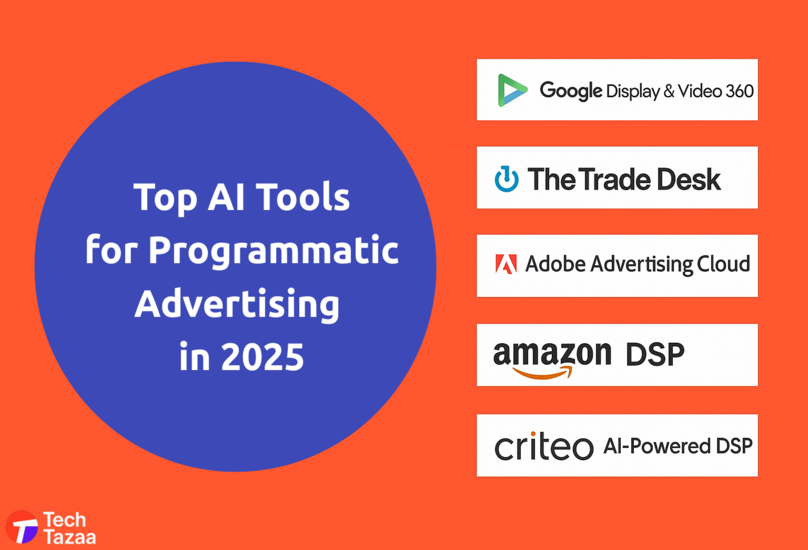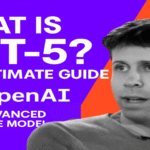In the last decade, programmatic advertising has experienced a monumental shift. The application of AI programmatic advertising tools have reshaped the industry into one where AI-driven ad platforms have become the engine behind successful digital marketing campaigns in 2025 and beyond. From real-time bidding to personalized creative optimization, not only is artificial intelligence making your ads smarter, but it is also making them faster and more effective.
If you are a marketer, brand owner, or media buyer, it is now not a question of if you should start using AI ad platforms, but rather which platform is right for you.
This guide will discuss the best AI advertising software options available in 2025, outline how these platforms can optimize your campaigns, and help you figure out which AI is right for ad optimization.
Why Marketers Need AI in Programmatic Advertising
Traditional ad buying involved manual negotiations, spreadsheets, and guesswork. Today, AI eliminates inefficiencies by:
- Automating bidding in milliseconds through Demand-Side Platforms (DSPs)
- Predicting campaign performance using historical and behavioral data
- Personalizing creatives for each audience segment
- Reducing wasted ad spend by targeting the right users at the right time
According to industry reports, campaigns that leverage AI advertising software see an average of 30–40% better ROI compared to traditional programmatic campaigns.
Top AI Programmatic Advertising Tools in 2025
Here are the platforms dominating the landscape this year:
1. Google Display & Video 360 (DV360)
DV360 integrates with Google’s vast ecosystem, giving advertisers unmatched reach. Its AI programmatic advertising tools predict user intent and optimize placements automatically.
- Best For: Brands wanting large-scale reach across Google properties.
- Pros: Powerful integrations, deep audience insights.
- Cons: Complex setup for beginners.
2. The Trade Desk
As one of the most trusted AI ad platforms, The Trade Desk focuses on transparency and advanced audience segmentation. Its AI models help marketers fine-tune targeting across devices and channels.
- Best For: Agencies and enterprises running multi-channel campaigns.
- Pros: Cross-device targeting, strong reporting features.
- Cons: Higher learning curve and premium costs.
3. Adobe Advertising Cloud
Adobe leverages its AI engine, Sensei, to power AI advertising software. It integrates seamlessly with analytics and creative tools, helping brands optimize ad creatives as well as bidding.
- Best For: Brands already using Adobe Analytics or Creative Cloud.
- Pros: Strong data-driven insights, creative optimization.
- Cons: Best value only if you’re in Adobe’s ecosystem.
4. Amazon DSP
Amazon’s AI for ad optimization is a game-changer for e-commerce brands. It combines retail purchase insights with predictive bidding to reach high-intent shoppers.
- Best For: E-commerce, retail, and consumer goods brands.
- Pros: Access to Amazon’s exclusive retail data.
- Cons: Limited outside of Amazon’s environment.
5. Criteo AI-Powered DSP
Criteo has evolved into one of the most dynamic AI programmatic advertising tools, offering personalization at scale. Its AI-driven retargeting boosts conversions with precise recommendations.
- Best For: Retargeting and performance marketing campaigns.
- Pros: Strong retargeting engine, e-commerce focused.
- Cons: Limited brand awareness features.
Comparison Table: Best AI Programmatic Advertising Tools (2025)
| Platform | Strengths | Best For | Limitation |
| Google DV360 | Huge reach, predictive optimization | Large-scale brand campaigns | Complex for beginners |
| The Trade Desk | Transparent, cross-device targeting | Agencies, enterprises | Higher costs |
| Adobe Cloud | Integrated with analytics & creative | Data-driven marketers | Works best in Adobe stack |
| Amazon DSP | Retail insights, e-commerce focus | Consumer goods, e-commerce | Limited off Amazon |
| Criteo | Retargeting, personalization | Performance-focused brands | Less focus on awareness ads |
Case Study: How AI Transformed a Retail Campaign
A mid-sized fashion brand adopted AI advertising software (Amazon DSP + Criteo) to optimize its seasonal campaigns.
- Challenge: High ad spend with low ROI from traditional programmatic.
- Solution: Used AI for ad optimization to retarget cart abandoners and bid more efficiently during peak hours.
- Results:
- 42% increase in conversions
- 28% reduction in cost per acquisition
- 3x higher ROI compared to the previous year
This example highlights how adopting the right AI ad platforms can create measurable impact.
Pros & Cons of Using AI Advertising Software
Pros:
- Automates time-consuming tasks
- Improves targeting precision
- Reduces wasted spend
- Personalizes ad experiences
Cons:
- Can be costly for small businesses
- Steeper learning curve for advanced platforms
- Over-reliance on AI may reduce human creative input
Future of AI in Programmatic Advertising
The next wave of AI programmatic advertising tools will focus on:
- Privacy-first targeting: Leveraging AI while respecting user data.
- Predictive creative optimization: Ads that redesign themselves based on performance.
- Deeper personalization: Hyper-relevant ads tailored to micro-audiences.
By adopting the right AI ad platforms today, brands can stay competitive in a market that’s only going to get more automated and data-driven.
FAQs on AI Tools for Programmatic Advertising in 2025
- What are AI programmatic advertising tools?
These are platforms that use artificial intelligence to automate ad buying, targeting, bidding, and creative optimization.
- Which are the best AI ad platforms in 2025?
Google DV360, The Trade Desk, Adobe Advertising Cloud, Amazon DSP, and Criteo are leading platforms in 2025.
- How does AI for ad optimization improve campaigns?
It analyzes user data, predicts outcomes, and optimizes campaigns in real time, boosting efficiency and ROI.
- Is AI advertising software suitable for small businesses?
Yes. Many platforms now offer scalable solutions, making them accessible for startups and SMEs.
- What is the future of AI in programmatic advertising?
Expect predictive analytics, ethical AI, privacy-first targeting, and more advanced personalization.
Final Thoughts
In 2025, employing AI programmatic advertising tools is a need, not a competitive advantage. It doesn’t matter if you are an e-commerce brand, agency, or enterprise, the best AI advertising software will take your campaigns further, do it more cost-effectively, and yield greater results.
The best you can do is test multiple AI ad platforms, review results, and scale your investment in the platform that best fits your needs. With ad optimization driven by AI leading the way, the future of advertising is smarter than ever.


